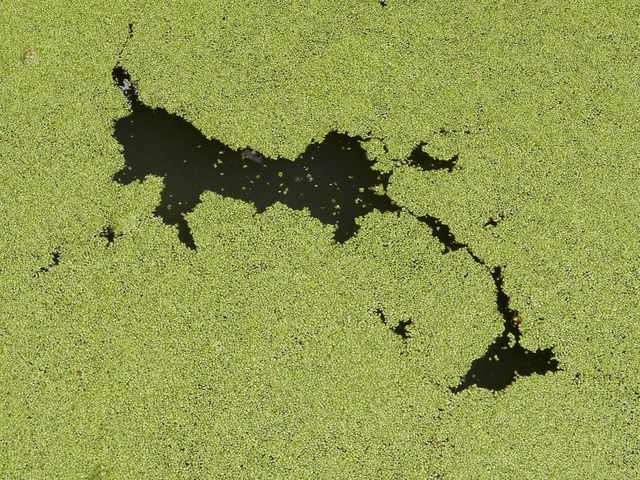DNR Receives 173 Reports of Algal Blooms This Year
Wednesday, September 3rd, 2025 -- 9:00 AM

(Danielle Kaeding, Wisconsin Public Radio) As of Aug. 26, the Wisconsin Department of Natural Resources had received 173 reports of algal blooms so far this year.
According to Danielle Kaeding with the Wisconsin Public Radio, Gina LaLiberte, the agency’s statewide harmful algal bloom coordinator, said that’s roughly on par with the 182 reports received at the same time last year.
While numbers are down slightly so far this year, LaLiberte said reports are still trending upward over time. The DNR confirmed about 62 percent of reports were cyanobacterial, or blue-green algae blooms.
The blooms often look like spilled paint or pea soup, and they can make people and animals sick. “When they’re actively growing they tend to be green,” LaLiberte said.
“When you see those tiny green particles in the water, you should be suspicious that that’s blue-green algae, and you are most likely to see them floating on the surface and forming scums where they’re really abundant during really calm conditions.”
She said bloom reports peaked in mid-August this year. The DNR also uses the Cyanobacteria Assessment Network, a multi-agency project that uses satellites to detect harmful algal bloom on about 130 of Wisconsin’s largest lakes.
That includes Lake Winnebago. In early August, local public health officials warned of a harmful algal bloom on the north shore of Lake Winnebago. Don and Doris Poshak, who live in the village of Harrison, regularly visit a beach on the lake’s north shore.
Don Poshak said they left immediately one day because the stench was so bad, saying it smelled like rotten eggs. “There were days when we would go down to that place, and you couldn’t even breathe there. It was so bad, let alone we never went in the water,” Don Poshak said. “There’s no way.”
The Poshaks said conditions have since improved. They’ve seen many families swimming in the lake before and after the bloom in early August. Large, shallow lakes or impoundments on large rivers tend to experience a lot of blooms because they hold more nutrients including phosphorus and nitrogen.
LaLiberte said lots of nutrients and shallow warm waters set the stage for blue-green algae to form. Blooms have also been sighted on Petenwell and Castle Rock Lakes and the Big Eau Pleine Reservoir in central Wisconsin, as well as Beaver Dam Lake in southern Wisconsin.
On the Great Lakes, two blooms were spotted at the inner harbor in Superior on Aug. 13, including at Barker’s Island beach. LaLiberte said screening did not detect microcystin, a toxin produced by blue-green algae.
Blooms are becoming more frequent in the harbor and Lake Superior. Known for its cold waters, Lake Superior is one of the fastest-warming lakes worldwide.
Another bloom was reported in Ontario waters of Lake Superior in mid-August, and Green Bay on Lake Michigan experienced several blooms in late May, mid-June ane early to mid-July.
According to federal figures, harmful blooms cost an estimated $10 million to $100 million on average each year. The Wisconsin Department of Health Services is investigating 18 reports of illnesses and one dog death that may be related to harmful algal blooms.
Health officials suspect eight illnesses were related to the blooms, and two cases were likely caused by exposure to blue-green algae. Symptoms may include a red rash, hives, headache, diarrhea, vomiting or irritation of the nose and throat.
Last year, the state investigated 35 illnesses, as well as four reports in animals that included one dog that died. The number of blooms was up 40 percent last year from 2023, which was likely due to Wisconsin’s warmest winter on record.
LaLiberte said blue-green algae didn’t die off due to a lack of ice. A wet spring also sent a surge of nutrients into lakes that likely drove more blooms. While this past winter wasn’t as warm, it was still one of the warmer winters recorded in Wisconsin.
A 2021 report from the Wisconsin Initiative on Climate Change Impacts found the state has seen warmer and wetter conditions, longer growing seasons and less ice cover. Those conditions can set the stage for blooms to form.
“These are trends that we might end up seeing more blooms into the future,” LaLiberte said. While blooms are typically reported in the summer, LaLiberte said reports can trickle in through September and October.
Even if people aren’t swimming, she advised people to check water conditions and look out for their dogs this fall.
Feel free to contact us with questions and/or comments.




